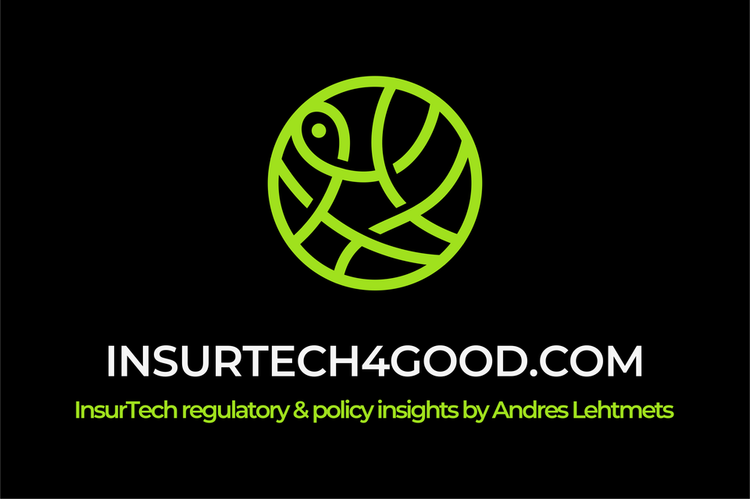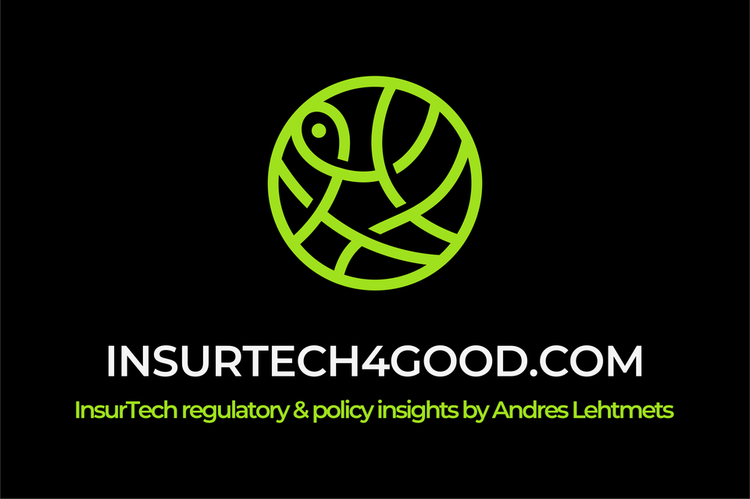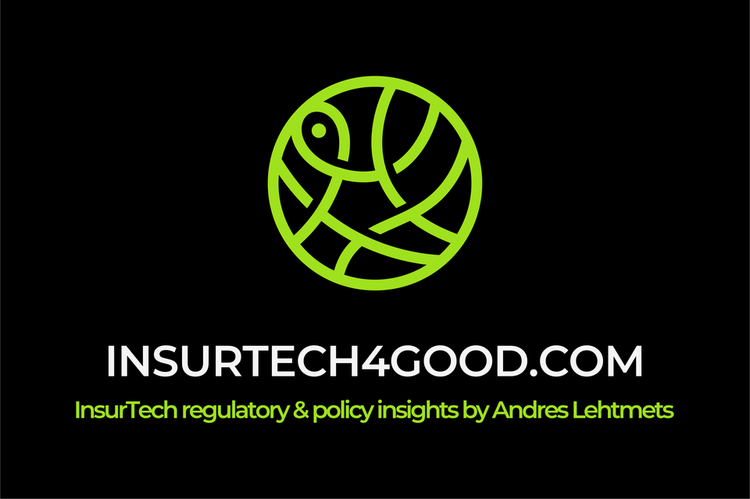InsurTech4Good.com Weekly Newsletter – #22, 2025

Another episode of my newsletter is here. Let’s start with the most topical development: the Financial Data Access (FiDA) proposal. It’s still all to play for.
At least, that’s my reading following the second trilogue earlier last week.
So, what does this mean?
If you support FiDA, now is the time to speak up. Show your use cases. Demonstrate demand. Explain what you’re building and why it matters. Be sharp. Be evidence-based.
If you’re critical of the proposal, don’t list 35 objections. That risks being seen as an attempt to kill the file—which is not realistic. Instead, focus on the one or two most important concerns. Offer clear, constructive suggestions for improvement.
Need help sharpening your arguments, identifying business opportunities, or understanding the proposal more deeply? Get in touch.
I bring a strong mix of regulatory, technical, business, and supervisory expertise. And when needed, I collaborate with some of the best in financial services public affairs.
Together, we offer a "dream team" setup—a rare combination of deep policy insight, strategic advocacy, and commercial understanding.
Probably one of the best combinations you’ll find.
Other topics covered this week: how young consumers are reshaping the insurance market, pension dashboards, global fintech’s shift to sustainable growth, AI in insurance supervision, third-party risk management, and trust in supervision.
Best,
Andres
P.S. If you're navigating InsurTech regulation, policy, or innovation—and think I can help—don’t hesitate to get in touch.
📬 Subscribe to my newsletter here
📌See how I can help you here
🔗 Follow me on LinkedIn
📧 andres@insurtech4good.com
What do young people think about insurance?
Young consumers are ready to share their personal data if it helps prevent and mitigate risks.
That’s one of the key findings of a recent Insurance Europe report.
Anyone questioning the need or demand for the Financial Data Access Regulation (FiDA) should take this finding - and the other insights in the report - seriously.
This generation will soon dominate the insurance market. It’s no longer a distant future. Those who aren’t thinking about it today risk being left behind. And as I said in past - this is not only business problem. It then very quickly becomes also a supervisory problem.
Another striking insight: 79% of young consumers believe insurers should do more to prevent risks and promote responsible behavior. At the core of this expectation is data sharing, one way or another.
Another myth often used (including in FiDA debate) is price. While price matters, it’s not the top concern. Safety comes first. Young consumers value insurance. Protection and coverage matter even more.
We just need to give them the tools to understand what protection and coverage really mean. (And let’s be honest: the current disclosures rulebook is not part of the problem here.). You might have some impact but you cannot solve complexity with disclosures alone.
Finally, simplicity is key. Young people want clear, consumer-friendly information, digital-first services, and straightforward processes when buying insurance.
The report rightly recommends that the EU should support innovation through flexible, principle-based rules - rules that allow insurers to use data and technology to better serve young consumers.
Well, guess what? I can think of one rulebook that aims to do exactly that - and could absolutely deliver on it: FiDA.
Read more here.
European Commission consultation on supplementary pensions, including pension dashboards
Open Finance and the EU Financial Data Access Proposal (FIDA) could significantly boost the uptake of pension dashboards.
Pension dashboards are digital platforms that allow citizens to view an overview of their pension entitlements across different schemes in one place.
They may also provide estimates of future pension benefits.
By offering a comprehensive picture of entitlements from various types of pension schemes, dashboards help individuals make informed decisions about their careers, retirement planning, and savings needs.
Numerous countries around the world have already implemented pension dashboards, with many others in the process of developing them.
What’s the state of play in Europe?
Seven EU Member States, as well as Norway, already have a pension dashboard in place.
Four more EU Member States are currently developing one, along with the UK and Switzerland.
Why does it matter?
Pension dashboards give citizens in a Member State access to all their pension entitlements in one place, presented in an accessible and understandable format.
They help individuals understand what income to expect in retirement and raise awareness of whether it will be sufficient.
They engage citizens and improve knowledge about their pension situation.
A key requirement for effective pension dashboards is data sharing.
Open finance and open insurance could greatly increase the uptake of pension dashboards across the EU, as data standardisation and access are essential enablers of these digital platforms.
For example, FIDA’s standards could in the future be leveraged to support dashboard development (regardless of how pensions are ultimately treated within the scope of FIDA).
And one more thing:
The European Commission is currently consulting on supplementary pensions, including pension dashboards.
Among other topics, they are seeking views on:
- What features would make a pension tracking system a useful tool to raise citizens’ awareness of their future pension entitlements and help them plan for retirement?
- What elements should such a system include?
- What are the most significant challenges in setting up a pension tracking system?
Read more here.
The Future of Global Fintech
The FinTech industry is transitioning from a period of rapid expansion to a phase of sustainable growth, increased collaboration, and broader market reach.
Other main highlights from the just-published Future of Global Fintech report:
1. The global fintech industry remains robust as it moves toward a more sustainable growth phase.
2. Macroeconomic factors continue to pose the primary challenge to fintech growth, though some improvements have been observed.
3. Financial inclusion remains central to the fintech value proposition, with traditionally underserved segments making up significant portions of customer bases.
4. Partnerships are critical to fintech strategies. Overall, 84% of surveyed fintechs are partnering with incumbent financial institutions.
5. Fintechs generally express satisfaction with the regulatory landscape and regulators’ approaches. However, challenges remain in areas such as financial authority knowledge and capacity, coordination among authorities, and licensing and registration processes.
6. Technology adoption continues to accelerate, with 80% of surveyed fintechs implementing artificial intelligence (AI) across multiple business domains.
7. 93% of surveyed fintechs reported that open banking and open finance are key topics shaping the industry’s future.
Read more here.
IAIS mid-year Global Insurance Market Report and AI
Global insurance watchdog IAIS will explore global trends in insurers’ adoption and governance of AI this year.
Two dimensions will be considered:
Own risk: AI has the potential to transform both insurer operations and the overall market structure of the insurance sector. Insurers report that they face fierce competitive pressure to find AI use cases that, among other things, improve consumer outcomes, reduce costs, and increase efficiency.
Balance sheet: Given AI’s potential to materially change markets and disrupt certain economic sectors, insurers need to consider its impact on asset valuation. Equally, insurers need to understand how underwriting risks may change with increased AI use.
This is a very interesting angle, and I look forward to reading the outcome early next year.
In the meantime, check out this mid-term Global Insurance Market Report here.
Third-party risk management in finance and insurance
This paper examines how third-party risk management (TPRM) in finance and insurance relates to the broader operational resilience landscape and identifies important distinctions between risk management and resilience, which should be accounted for in relevant policymaking.
Core to this relationship are the notions that:
1. TPRM is an integral part of overall operational risk management
2. The good management of third-party risks contributes to the ultimate outcome of operational resilience.
The paper is intended as a useful resource for financial institutions and financial authorities around the world, as well as other stakeholders seeking to understand the relationship between TPRM and operational resilience.
Read more here.
Insurance, Supervision and Trust
Great reading on insurance, supervision, and trust.
Well summarized: global challenges (such as technological innovation, or the lack thereof) require global solutions grounded in cross-border supervisory coordination, cooperation, and robust stakeholder engagement.
Read more here.





Member discussion